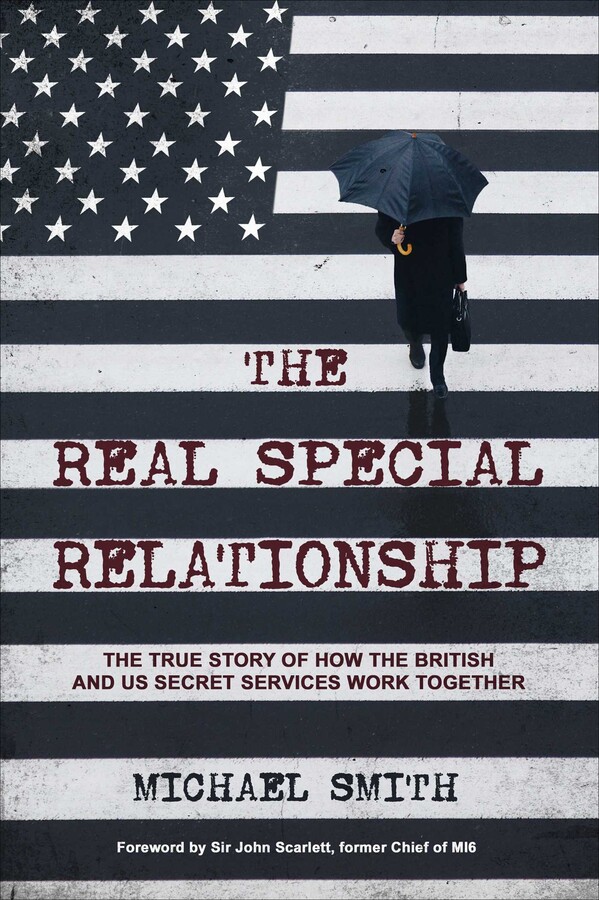
The term special relationship has long been used to describe the close ties between the United Kingdom (UK) and the United States of America (US). In his new and important book, The Real Special Relationship, Michael Smith argues that:
‘…the real foundations of that Special Relationship are the ties between the British and American intelligence services, which have been exchanging information that is vital to the security of both countries on a day-to-day basis for more than eighty years.’
Born out of necessity in the darkest days of World War Two, the close and enduring relationship around the sharing of intelligence between the two nations started with the, now famous, arrival of a party of four US signals intelligence officers at Bletchley Park on 8 February 1941. The book opens with the story of this mission which can be seen as the model for the relationship itself. Although at that time the US was not an active combat participant in the War, the level of trust shown by both nations was huge, and that trust has been the crucial factor throughout the subsequent eighty years – a point made very clearly in the foreword to the book penned by former Chief of MI6 and Chair of the Joint Intelligence Committee, Sir John Scarlett.
Smith weaves a compelling story that traces the collaboration between the UK and the US ever since those World War Two beginnings. The book focusses principally on the relationships between the United Kingdom’s Government Communications Headquarters (GCHQ) and Secret Intelligence Service (SIS or MI6), and their United States equivalents the National Security Agency (NSA), and Central Intelligence Agency (CIA). There is less coverage of the relationships between the Security Service (MI5) and its equivalent the Federal Bureau of Investigation (FBI) or that between the respective defence intelligence organisations. Nonetheless, this is a large tome in which Smith traces how the relationships grew and have developed. Through his detailed and extensive research, he provides stories and insights that will fascinate both the novice follower of the intelligence world as well as those with a more detailed understanding.

British Prime Minister Harold Macmillan and US President John F. Kennedy in Key West, March 1961. Eighteen months later intelligence sharing was to be crucial to their relationship during the Cuban Missile Crisis. (Image courtesy: Don Pinder. Florida Keys-Public Libraries)
Smith highlights the keys factors that make the relationship valuable to each nation and therefore why and how it endures. He suggests that the reason the relationship has continued for this long:
‘…is that each side has always had something to offer that the other did not have. Initially, the British had far greater experience and expertise in codebreaking, human intelligence and counter-espionage than the relatively new US agencies and were very happy to share it, while the Americans had greater technical sophistication and the money to pay for it. The British also had the considerable bonus of bases in former colonies which would give the US intelligence agencies access to parts of world they would not have otherwise been able to reach and which, despite their inherent animosity towards the British Empire, were very happy to use. The combined effort was far more effective at collecting intelligence from across the world than either side could ever have managed on its own.‘
The relationship, like any in existence over such a period, has not been without its ups and downs. The author points out how, despite political differences, the underlying interaction and cooperation between the agencies has remained solid. He highlights, in a chapter entitled ‘The Lowest Point’, how in the early 1970s under the premiership of Prime Minister Edward Heath, the political relationship reached an all-time low, fuelled in no small part by Heath’s willingness to seek ever closer relations with Europe at the expense of the UK’s relationship with the USA. This reached a pinnacle in 1973 when the US National Security Advisor Henry Kissinger ‘…ordered the NSA, CIA and DIA to stop cooperating with their British counterparts.’ This caused the then Director of GCHQ, Bill Bonsall, to rush to the USA to try to prevent this destroying the relationship. On arrival at the NSA, he was assured that ‘…the NSA had already decided that the UK/USA relationship was a contractual agreement that could not legally be broken.’ To anyone who has worked within the intelligence organisations this aspect of the relationship is self-evident, with operatives in both nations recognising and stiving to make things work, despite anything and everything that might be put in their way!
Smith summarises the relationship as follows:
‘When two countries are sharing intelligence on such a scale and also share a very similar worldview, the decision makers and governments receiving the same intelligence, whatever their differences over matters of purely national interest, are always likely to adopt a similar approach to world events and as a result coordinate their responses. That is what keeps Britain and America locked together in step with each other. That is the real Special Relationship.‘
This book is an excellent telling of this important story. It adds further weight to Michael Smith’s reputation as one of the United Kingdom’s leading authors on intelligence history. In the turbulent political and economic times in which we currently live, this is a must read for anyone even remotely interested intelligence matters.
Very Highly Recommended
Hardback
Pages: 576 pp
Simon & Schuster
Published: August 2022
Thank you so much for a great review!
LikeLike